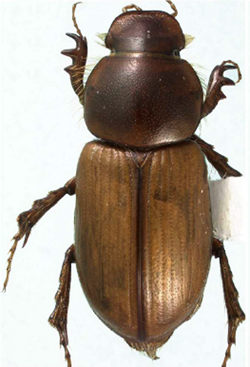| .. |
Scarabaeoidea of Southern South America Links
|
.
Keys and generic profile |
|
|
| . |
| . |
Scarab Guide Links
(goes to the University of Nebraska
web site) |
.
Classification |
|
|
| . |
| . |
| . |
| . |
| . |
| . |
| . |
| . |
| . |
| . |
| . |
| . |
| . |
| . |
| . |
| . |
| . |
| . |
| . |
| . |
| ... |
| . |
| . |
| . |
| . |
| . |
| . |
| . |
| . |
| . |
| . |
| . |
| .. |
| ... |
| . |
| . |
| . |
| . |
| . |
| . |
| . |
| |
| . |
| . |
| . |
| . |
| . |
| . |
| |
| . |
| . |
| . |
| . |
| . |
| . |
| . |
| . |
| |
| . |
| . |
| . |
| . |
| . |
| |
| . |
| . |
| . |
| . |
| . |
| . |
| . |
| .. |
| . |
| . |
| . |
| . |
| . |
| . |
| . |
| . |
| . |
| . |
| . |
| . |
| . |
| . |
|
| |
.
Orodaliscoides reflexus (Schmidt, 1910) |
| |

|
|
Orodaliscoides reflexus
(Schmidt) male.
Photo by Paul Skelley. |
Orodaliscoides reflexus
(Schmidt) female.
Photo by Paul Skelley. |
|
|
|
| |
|
Orodaliscoides reflexus distributional records from southern South America. |
| |
| |
Original combination: Aphodius reflexus Schmidt, 1910: 357. |
| ..... |
|
| |
Type locality: “Argentina.” |
| ..... |
|
| |
Type specimens: Aphodius reflexus lectotype at NHRS examined. Lectotype labeled: “Valparaiso”
(handwritten), “TYPUS” (typeface on red paper), “REP. ARGENTINA / PROV / Chubut / M. RICHTER”
(typeface and handwritten), “reflexus m:” (handwritten), “LECTOTYPE / Aphodius reflexus Schmidt / des. P.
E. Skelley-06” (typeface on red paper), “Southern Neotropical Scarabs / database # AS2604956 / Orodaliscoides
reflexus / (Schmidt, 1910) / DET: P.E.SKELLEY 2006” (typeface). Lectotype here designated. A
lectotype is designated to stabilize the nomenclature of this species. At least one additional paralectotype
specimen was reportedly deposited in the J. Richter collection in Buenos Aires (Schmidt, 1910). The current
location of this specimen and the existence of other paralectotypes are unknown. |
| ..... |
|
| |
Specimens examined: 62 specimens were examined from ABTS, HAHC, LEMQ, NHRS, PESC, TMSA. |
| ..... |
|
| |
Distribution: ARGENTINA (62): Neuquén (40): General Roca, Lago Blanco, Piedra del Aguila, Sa.
Vaca Muerta; Río Negro (11): Coronel Gómez; Chubut (10): Comodoro Rivadavia (S), Golfo San Jose (Peninsula
Valdes); No Data (1). |
| ..... |
|
| |
Temporal data: January (1), November (23), December (37). |
| ..... |
|
| |
Diagnosis: Length 5–7 mm. Similar to O. rugosiceps except from Argentina; clypeus usually evenly
rounded (clypeus rarely parallel-sided); gena weakly prominent; pronotum anterior angle not
prominent (not explanate), pronotum posterior angle usually not evident, pronotal lateral margin fringed with
extremely long setae; all protibial teeth equidistant, protibia usually broad and stout. |
| ..... |
|
| |
Remarks: The protibial tooth placement character is the best to use in distinguishing O. reflexus from
Argentina and O. rugosiceps from Chile. However, several individuals from Argentina show considerable
variation in characters listed above. They varied as much from typical specimens as they did from each other
and were initially considered new species. Characters that varied included the clypeus (often parallel-sided),
pronotal (some notably constricted at base), and protibial shape and placement of teeth. Some were intermediate
between character states of O. reflexus and O. rugosiceps, while others (like an elongated protibia)
appeared distinct. However, these specimens were collected as part of series of normal specimens. Thus, it is
premature to describe them as new until more data is available. For now, we consider them unusual specimens
of O. reflexus. |
| ..... |
|
| |
References:
Schmidt, A. (1910) Neue Arten aus den Gattungen Aphodius Illig., Ataenius Har., Saprosites Redtenb. (Col.). Deutsche Entomologische
Zeitschrift, 1910, 353–361.
|
| ..... |
|
| |
Excerpt from:
Smith, A. B. T. and P. E. Skelley. 2007. A review of the Aphodiinae (Coleoptera: Scarabaeidae) of southern South America. Zootaxa 1458: 1-80. |
| ..... |
|
|

